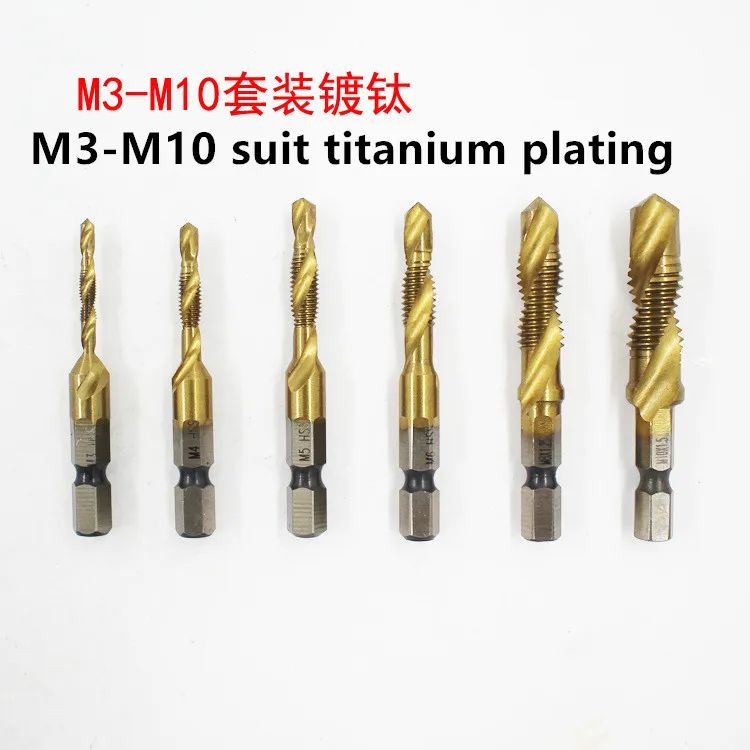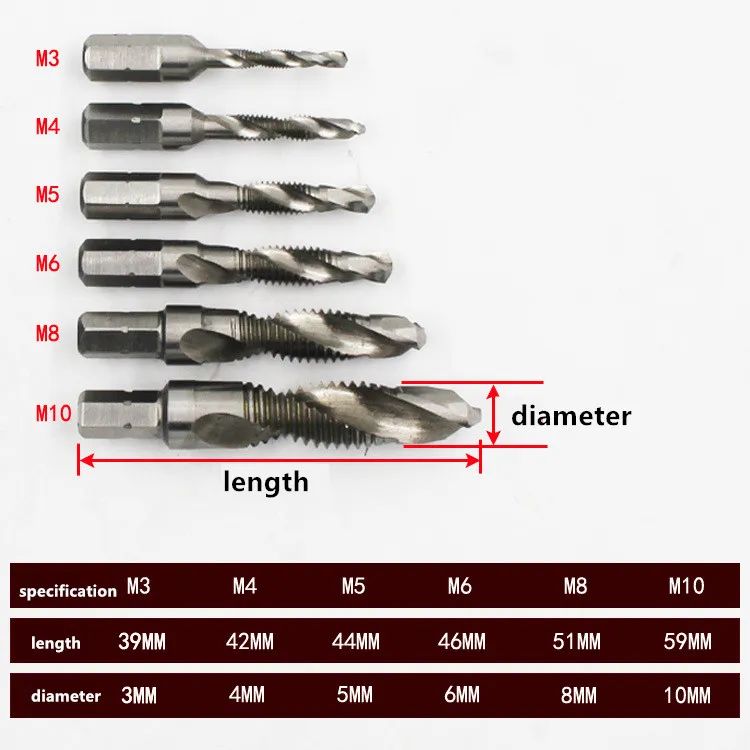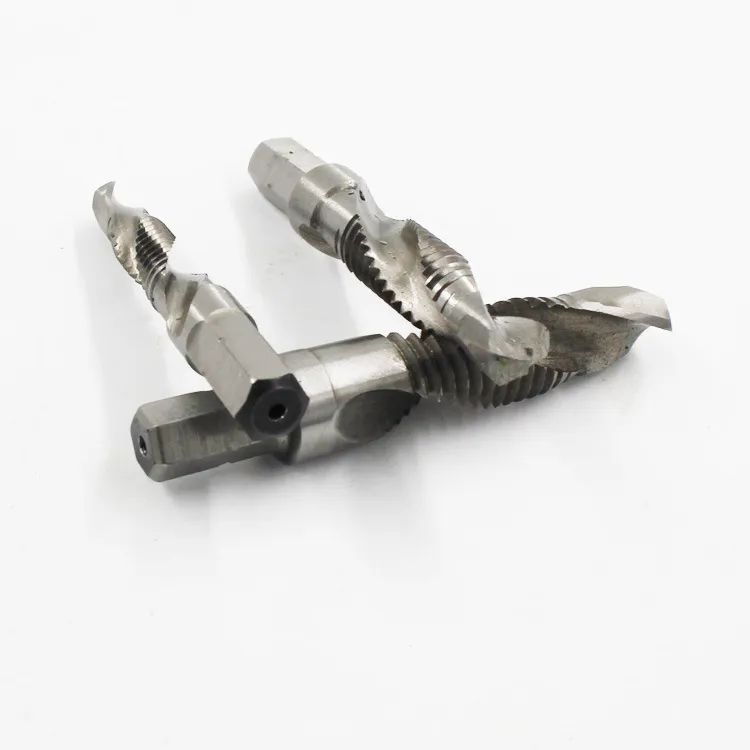Knowledge of drilling and tapping integrated tap
Drilling and tapping integrated tap (hereinafter referred to as: compound tap): Usually when we process internal threads, we first use a drill to process the bottom hole, and then use a tap to tap out the thread. The drilling and tapping tap is a tool that combines the drill and the tap in one tool. The tool can complete drilling and tapping at the same time without changing the tool.
Advantage:
1.Improve work efficiency:
Drilling and tapping integrated tap can complete tapping operations in one drilling, which greatly shortens processing time, thereby improving work efficiency and production capacity.
2.High processing accuracy:
Since the compound tap drill is made by precision machining, the dimensional accuracy is high and the aperture shape is regular during the machining process. This ensures that the machined parts are accurate in size and good in shape.
3.Reduce processing links:
The traditional processing method requires drilling and tapping separately, while the compound tap drill only needs one tool to complete these two steps, thereby reducing processing links, reducing the difficulty of operation and the machine failure rate.


4.High strength, high precision and high durability:
Drilling and tapping integrated tap are usually made of high-quality alloy steel materials, which are precision machined and heat treated, and have high strength, high precision and high durability. This enables it to cope with various stainless steel fastening operations, and efficiently and labor-savingly complete tasks such as drilling, tapping and self-tapping screw tapping.
5.Flexible operation and comfortable feel:
Compound tap drills often adopt ergonomic design, which makes the operation more flexible and the feel more comfortable. This helps to improve work efficiency and reduce labor intensity.
6.Strong adaptability:
Compound tap drill bits are suitable for a variety of different working environments and materials, such as stainless steel, showing its strong adaptability and flexibility.
In summary, compound tap drill bits have broad application prospects in industrial production and home maintenance fields due to their advantages of high efficiency, high precision, high strength, high durability and flexible operation.
Disadvantage:
1.High cost:
Compared with traditional drilling and tapping tools, drilling and tapping integrated tap are expensive to manufacture. Due to their complex structure, their manufacturing and maintenance costs are relatively high.
This high cost will also be reflected in their market price, which may not be suitable for low-cost production needs.
Limited scope of use:
2.Compound tap drills are mainly suitable for the manufacture of parts with smaller apertures. For the processing of parts with larger apertures, other drilling and tapping tools may be required.
Their structural and design features also limit their applicability on certain special materials or workpieces.
3.Not suitable for all processing occasions:
Compound tap drills may break or break due to uneven force in fully automatic processing methods, such as machining centers. They are more suitable for manual or semi-automatic processing methods.
4.Not easy to maintain:
Due to their complex structure, when compound tap drills fail or are damaged during use, the cost of repair and replacement is relatively high.
5.Processing efficiency and precision:
Although compound tap drills are versatile, their processing efficiency and precision may not be as good as single special tools. In addition, their service life is relatively short.
6.Problems with specific materials:
When drilling specific materials such as carbon fiber composites, due to the high hardness and low thermal conductivity of these materials, the surface material of composite tap drills is prone to annealing, causing problems such as reduced durability and severe wear.
In summary, Drilling and tapping integrated tap have some disadvantages in terms of cost, scope of application, processing methods, maintenance, processing efficiency and specific material processing. These factors need to be considered comprehensively when selecting and using them.

